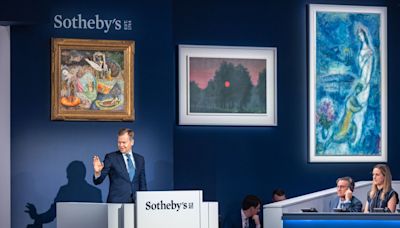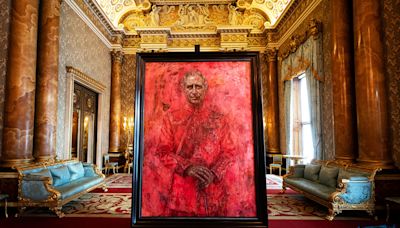Ad
related to: francis bacon artist workRead Customer Reviews & Find Best Sellers. Free 2-Day Shipping w/Amazon Prime.
Search results
Bacon's career spanned over six decades. Discover highlights such as Painting 1946, 1946 and trace his stylistic developments. Francis Bacon, Painting 1946, 1946. Collection: Museum of Modern Art, New York. © The Estate of Francis Bacon.
- 1930S
In the early 1930s Bacon began to concentrate on painting,...
- 1980S
During the 1980s Bacon exhibited in prestigious institutions...
- 1960S
In 1962 Bacon was honoured with a retrospective at Tate...
- 1950S
'Francis Bacon, 82, Artist of the Macabre, Dies: Francis...
- 1990S
The artist still approached large-scale canvases, such as...
- Life
'Art: Recent Paintings By Francis Bacon' 'Artist of bleak...
- Painting 1946
The information in the present section on francis-bacon.com...
- 1930S
- Childhood
- Early Training
- Mature Period
- Late Years and Death
- The Legacy of Francis Bacon
Born in Dublin, Francis Bacon was named after his famous ancestor, the English philosopher and scientist. His father, Edward, served in the army and later took a job in the War Office during World War I. In an interview with critic David Sylvester, Bacon attributed the connotations of violence in his paintings to the turbulent circumstances of his ...
Bacon moved into a London apartment in the late 1920s and became involved with interior and furniture design. One of his patrons, the artist Roy de Maistre, became a mentor to Bacon and encouraged him to take up oil painting. Bacon modeled his early work after Picasso and the Surrealists, whose work he had seen on a trip to Paris. In 1933, Bacon ex...
His breakout success at the 1944 exhibition gained him further opportunities to show with Lefevre. Graham Sutherland, a friend and fellow exhibitor, also recommended him to the director of Hanover Gallery, where Bacon had his first solo exhibition in 1949. For this show Bacon painted a series entitled Heads, significant for being the first series t...
After the Paris exhibition Bacon moved increasingly toward self-portraiture, claiming, "people around me have been dying like flies and there is nothing else to paint but myself." Continuing to work steadily, he also completed a number of paintings in tribute to Dyer's memory. Many of these took the form of large format triptychs, including the wel...
Bacon's unique interpretations and the intensely personal nature of his work make it difficult to visually trace his influence in contemporary art. Nevertheless, his paintings have inspired some of the most standout artists of this generation, including Julian Schnabel and Damien Hirst. John Edwards, who inherited the estate, played an important ro...
- Irish-British
- October 28, 1909
- Dublin, Ireland
- April 28, 1992
People also ask
What did Francis Bacon do for a living?
How long was Francis Bacon a painter?
Who is Francis Bacon?
How did Francis Bacon influence figurative art?
Apr 28, 1992 · Francis Bacon (28 October 1909 – 28 April 1992) was an Irish-born British figurative painter known for his bold, grotesque, emotionally charged, raw imagery. He is best known for his depictions of popes, crucifixions and portraits of close friends.
- British, Irish
- October 28, 1909
- Dublin, Ireland
- April 28, 1992
Francis Bacon (28 October 1909 – 28 April 1992) was an Irish-born British figurative painter known for his raw, unsettling imagery. Focusing on the human form, his subjects included crucifixions, portraits of popes, self-portraits, and portraits of close friends, with abstracted figures sometimes isolated in geometrical structures.
Francis Bacon (28 October 1909 – 28 April 1992) was an Irish -born British [1] figurative painter known for his raw, unsettling imagery. Focusing on the human form, his subjects included crucifixions, portraits of popes, self-portraits, and portraits of close friends, with abstracted figures sometimes isolated in geometrical structures. [2] .
Francis Bacon (1909–92) was a maverick who rejected the preferred artistic style of abstraction of the era, in favour of a distinctive and disturbing realism. Growing up, Bacon had a difficult and ambivalent relationship with his parents – especially his father, who struggled with his son’s emerging homosexuality.
Francis Bacon (28 October 1909 – 28 April 1992) was an Irish-born British figurative painter known for his raw, unsettling imagery. Focusing on the human form, his subjects included crucifixions, portraits of popes, self-portraits, and portraits of close friends, with abstracted figures sometimes isolated in geometrical structures.


